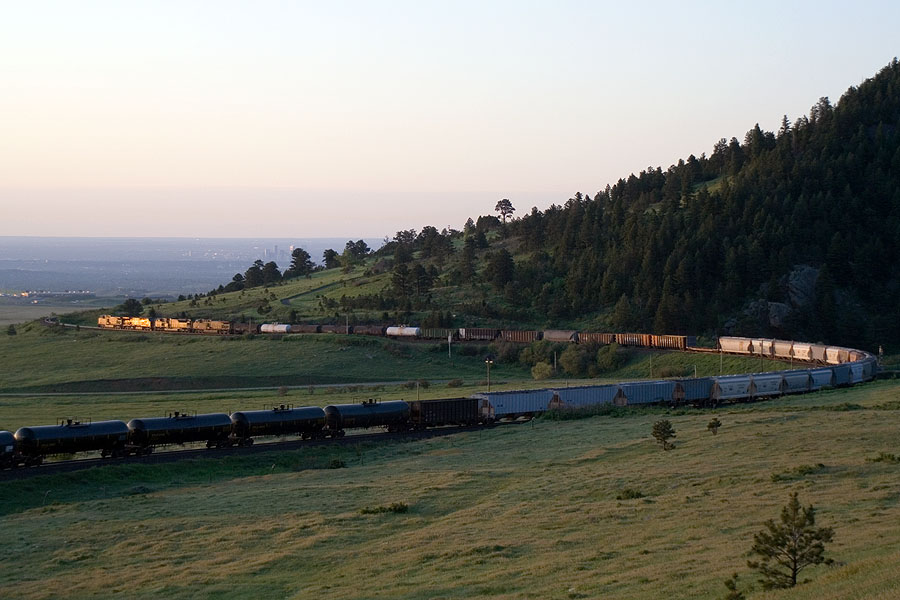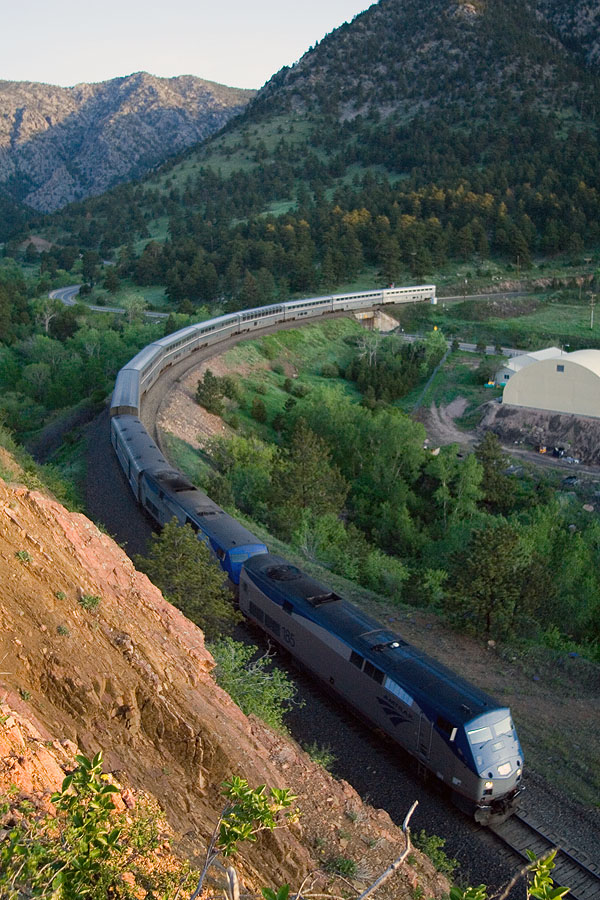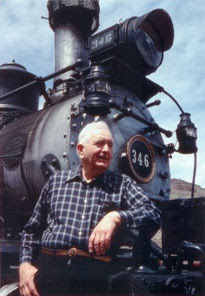
The first construction phase of
FasTracks, RTD's Light Rail & Commuter Rail expansion plan is scheduled to start mid-May. A ceremony is scheduled to start May 16th at 1 p.m. at Quail and 13th Street where they expect to begin removing the existing rails from the right-of-way.
The Denver, Lakewood & Golden originally laid down rails as their main line between the Platte River and the town of Golden in 1891 with the last spike being driven in Golden at the corner of Washington and Third Streets on September 7, 1891. In 1904, the Denver, Lakewood & Golden became the Denver & Intermountain, an
interurban line, and in 1909, overhead catenary wires were installed to permit the use of electric locomotives and
self-propelled passenger cars (trolleys).
In 1953, the line was abandoned, but the Denver to Simms Street portion was sold to Associated Railroads, a corporation owned equally by the
Atchison Topeka & Santa Fe,
Chicago Burlington & Quincy,
Chicago Rock Island & Pacific,
Colorado & Southern and the
Denver & Rio Grande Western. This was to service the Denver Federal Center, formerly the federally-owned Denver Ordinance Plant created in 1940 and operated by Remington during World War II to manufacture .30 caliber rounds and then added the capacity to make artillery shells. After the war, the Federal Government retooled the site for office space, becoming the Federal Center and the largest concentration of Federal employees outside of Washington DC.
Over the years, traffic on the line dwindled and the Rio Grande was handling all traffic. Interestingly, a catenary pole was mounted on a diesel switcher solely to activate the signals for grade crossings. Eventually by the mid-1990s, a century after the rails were laid, the line lay dormant, with the grade crossings mostly paved over and crossing signals removed. The right of way still existed, however, and RTD acquired it under their new FasTracks program.
The goal of the
West Corridor, as the line is now called, is to reduce congestion along Colfax Avenue, two blocks to the north. The line will navigate past the existing end-of-track near Simms on a new extension past Red Rocks Community College to the Taj Mahal-like
Jefferson County Administration and Courts Facility.
On a personal note, having grown up in the area and only seeing one or two trains on the line my entire lifetime, seeing the line in use for a very practical and helpful purpose will be very gratifying. It's still a question, however, how the north-south arteries like Sheridan, Wadsworth and Kipling will handle the double trouble between Colfax and the new traffic on the line.





